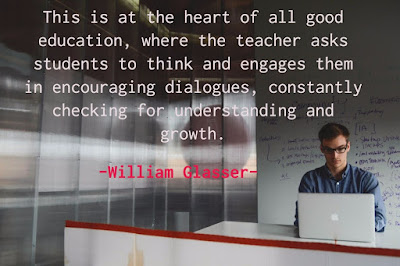Another manifestation of a multi-exceptional child, are those children who are both gifted and learning disabled. These children often struggle doubly hard because their giftedness and their learning challenges automatically set them apart from their peers not once, but twice.
Here is a TED-Ed Lesson that can help both parents and educators gain a better understanding the twice or thrice exceptional student: Gifted and Learning Disabled: Understanding the Twice Exceptional Student.
Needless to say, these kids bring a wide range of challenges into the classroom. But, because every child also brings in a whole slew of strengths with them into the classroom, it is vital that educators always take into account a child's abilities when considering programming.
So what are some common indicators that a student is twice (or thrice as is often the case) exceptional? One clear indicator is that the child's superior functioning in one or more areas is out of sync with their functioning in other, important aspects of learning. So, for example, a student might have exceptional talent in math but struggles to write a five sentence paragraph. A student might be a talented and innovative musician or artist, but can't make change in a financial transaction or interpret visual data on a graph. This situation of abilities being out of sync with one another is referred to as asynchronous development. Here is a quick video that explains this phenomenon:
Another indicator of a twice exceptional, gifted student is a real disconnect with the world they live in and the world of the classroom. These are often the students who we describe as full of potential, clearly bright, but unable to bring that brilliance and potential to fruition. These kids are often frustrated, bored, tuned-out or distracting. Also, often times, these are the students who struggle with anxieties or a real fear of taking risks. The reasons for these anxieties are often complex and often function as a real barrier for these students reaching their potential.
A final key indicator of a twice exceptional student is their frequent difficulty relating to their peers. These kids have such a different perspective of the world, such incredible focuses and interests at such a level of maturity, that they often feel isolated and/or frustrated by their peer group.
So, what can be done to help the Twice Exceptional student? Here are 3 suggestions that work well:
1. Teach to the strengths, then provide supports, accommodations and remediation for the areas of weakness. Twice exceptional students need an intellectual challenge and stimulation. If we only focus on their academic weaknesses, we risk disengagement.
2. Provide opportunities for enrichment and intellectual adventures. Let students pursue their singular passion at least some of the day. Condense the curriculum, let students work at their own pace, and then let them free (with support). Too often educators erroneously believe that gifted kids are mini-adults. Many of these students have remarkable abilities, but still need a mentor to help them achieve their goals and dreams.
3. Provide situations in which gifted, twice exceptional students can connect with each other and/or communities in which they express interests. Is there a way that the school counsellor can reach out to the local university or college? Is there a writer, a musician, an artist the student respects. Is there a way to help a child contact this person? Furthermore, are there extracurricular programs like the remarkable and popular TED-Ed Clubs program that provide students with an opportunity to pursue their passions available in your school? Is there a TEDx Event in your area where your students could present their ideas and amplify their passions via a global platform? What about community bands, local maker clubs, artist colonies and start-up clubs? Twice exceptional students need stimulation and novelty. They need safe, cognitively and developmentally appropriate outlets for their intellectual survival.
Finally, it is worth noting that in North America, we tend to worry about and support our struggling students. What happens if we forget about our gifted kids? Will they simply find their way, or will some of their latent potential go by the wayside? A great read on the matter is the thought-provoking How to Raise Genius Kids.
All children have LearnAbilties. What can we do to help support our students who are twice exceptional both improve their skills and embrace their intellectual singularity?








